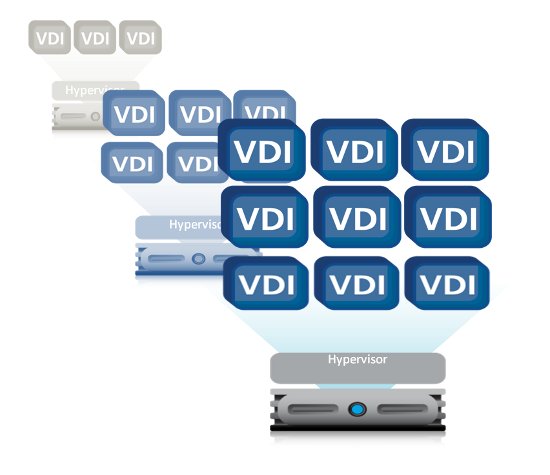Is Virtual Desktop Infrastructure (VDI) the answer?
Fri, 24 May 2013
cloud hosting
With the growth of the modern computer centric office and the need for flexibility surrounding users and desktop computing, increasing interest is being paid to the potential for remotely hosting user desktops in the data centre cloud. This form of remote computing has come to be known as Virtual Desktop Infrastructure or VDI.
The drive towards VDI is propelled by a number of forces. On the one hand, organisations are looking to reduce costs and ownership surrounding the maintenance and licensing of their desktop systems. On the other, users themselves are increasingly looking for flexibility in terms of desktop access and device usage.
Organisations are looking to reduce costs and ownership surrounding the maintenance and licensing of their desktop systems whilst users are looking for location and device independence.
Before we look more closely at these motivational factors, let’s quickly run through the technical background to VDI. Firstly, we need to distinguish VDI from its other well known remote access cousin, Remote Desktop Services, RDS. In general, RDS refers to the use of a proprietary Microsoft protocol that enables users and sys-admins to access a remote Windows server. This server can be used as a desktop for a number of users who all share the same directories and processes, albeit under different user names and permissions.
Whilst RDS (formerly known as Terminal Services) via Microsoft is functionally similar to VDI, the underlying structure differs, as does the user desktop experience itself. RDS could be described as server centric; although users have their own login, they still remain users in a common directory and share the same software and application processes and services, albeit under different user permission settings.
VDI, on the other hand, tends to use hypervisor technology that virtualizes underlying server hardware resources and presents individual desktops with separate user directories and software services. As such VDI demands rather more in the way of compute resources, yet at the same time, allows users to fully individualise their desktop environments. Furthermore, maintaining individual desktop ‘images’ allows support workers and sys-admins to more easily manage an maintain desktop accounts.

Multiple VDI desktop environments can be created on a single hypervisor which is then load-balanced
For the system’s administrator, knowing that each user has their own self contained desktop environment and does not share the operating system as a whole - as is the case with VDS- provides peace of mind as users are free to download and install software and applications (should their permission settings allow) without fear of infecting the system as a whole with the inevitable malware they will receive.
Using hypervisor technology to isolate desktop environments offers a number of possibilities for administrators:
- Easy desktop provisioning
- Powerful user management
- Possibility of load-balancing with other hypervisors
- Separate management console
- Independent connection brokering
Clearly, VDI is an extremely interesting proposition for admins who have responsibility for maintaining multiple desktops. However, the benefits for users are equally attractive. Accessing, for example, a Windows 7 desktop is possible from almost any device from anywhere that has an internet connection; the fact that you are in a foreign country with only an Android smart phone or Mac tablet should not matter.
VDI allows users to access a remote Windows & desktop from almost any device such as a Mac tablet, Android smartphone.
Working from home or working from the office is no different, users have complete freedom - so long as their internet connection is available, their desktops are ‘always on’. There is also the added benefit that, should any of these portable devices be lost or stolen, all data remains securely on the remote desktop in the data centre.
This security factor is comforting to admins, users and managers alike. And whilst data protection is increased, there are other business benefits to be considered. Flexibility in licensing can be attained with monthly or tariffs that include support as well as the ability to grow or shrink the number of users by the month without extra hardware costs.
Once services are in the data centre, a whole host of benefits and services immediately become available, from support and management to additional backup and alternative cloud deployment options.
Evidence suggests that small physical offices are becoming less utilised or less viable to maintain. Furthermore, employees are demanding more freedom to be productive wherever they my be. With these concurrent tailwinds, VDI, it seems, is providing the answer.
Come join us on: